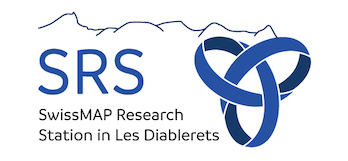Speaker
Description
Developing a predictive theory of non-Fermi liquids (NFLs) in two spatial dimensions remains a key challenge to modern condensed matter physics. At the level of real materials, it could provide insight into such pressing problems as high-T_c superconductivity, while in the abstract it is paradigmatic of the poorly understood scenario of 2-D criticality induced by a gapless boson interacting with finite density fermions. The functional renormalization group is particularly appropriate for studying NFLs, as it can handle the strong interactions and non-analytic operators inherent to them [1,2] – however, due to the breakdown of the quasiparticle picture, little is known about the form of the low-energy field theory and most theoretical approaches suffer a lack of predictive power. We seek to remedy this by using known exact identities, such as those provided by symmetries, to constrain the modelling. Specifically, we nonperturbatively study the problem of a U(1) gauge-field interacting with a 2-D Fermi-surface; it has long been known that the magnetic vector potential is not screened by the particle-hole continuum and so induces criticality [3,4]. We first show how the choice of regulators interplays with the U(1) symmetry – in particular, in order to correctly capture Landau-damping we need a soft frequency regulator for the fermions, which breaks the gauge symmetry and leads to modified Ward identities. These identities, though less tractable than the standard Ward identities, still provide exact relations between the couplings and constrain the flow. We discuss the NFL fixed point hosted by the model, and demonstrate how incorporation of the modified Ward identities influences its properties. We finish with some commentary on UV-IR mixing induced in the low energy physics by gauge symmetry, and the implications our results have for predictive modelling of non-Fermi liquids. [1] S. A. Maier and P. Strack, Phys. Rev. B 93, 165114 (2016) [2] W. Metzner, M. Salmhofer, C. Honerkamp, V. Meden and K. Schönhammer, Rev. Mod. Phys. 84, 299 (2012) [3] M. Yu. Reizer, Phys. Rev. B 40, 11571 (1989) [4] S. Chakravarty, R. E. Norton and O. F. Syljuåsen, Phys. Rev. Lett. 74, 1423 (1995)

